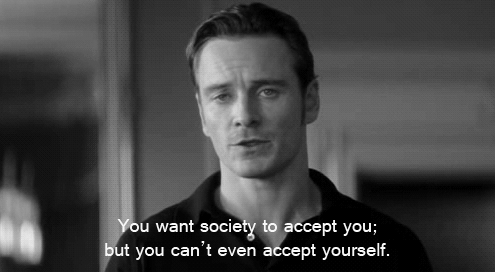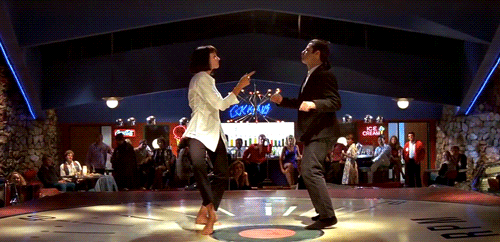
For the record, most of this blog post will NOT be about my book, 'cause there are some other amazing villains I gotta use as examples. But, I do need to start there.
So, when I was writing Never, Never, I was tasked with turning James Hook into a sexy heartthrob hero and turning Peter Pan, one of the most beloved little guys of all time into a villain. And not a moustache-twirling, over-the-top evil, wicked baddie. A bone-chilling, believable, real villain. Tricksy, tricksy. Thus, I turned to the following techniques...
1) A Good Villain Must Have a Real Character Motivation

Here's the thing. We writers spend countless hours creating character worksheets, doing personality tests (yeah, I sometimes give my characters Myers-Briggs tests. Whaddup.), and obsessing over our MC's. Most importantly, what they want. But, oftentimes, the villain is thrown in just to be an obstacle to the MC. You can do that if the villain isn't a big deal in your story. BUT, if you want to write a truly great antagonist, they need to want something, too. That thing cannot be just to ruin the MC's life. Because in all honesty, no one is that much of a tool. No one is so loser-y that the only thing they want out of life is to ruin someone else's.
Take Loki, for example. I freaking love Loki. His main motivation in Thor was to prove to himself and to his father that he, too, was awesome, though he'd been constantly overshadowed by his all-powerful-golden-boy big brother. In essence, his motivation was overcoming some serious self-esteem problems and daddy issues. In The Avengers, he'd passed through a crazy, life-altering abyss-portal and had pretty much made the switch into ultimate B-A bent on world domination. Even then, that stemmed from the original Thor-Movie-Issue.
Note that never was his sole purpose in life to stand in the way of Thor. No, it just so happened that their goals were at odds with each others. Give your villain a goal. A real motivator. One just as good and fully fleshed out as that of your MC. That's step one.
2) Your Villain Needs to be Somewhat Likeable. (What??? Trust me. I promise.)
When I say your villain needs to be somewhat likeable, I don't necessarily mean that readers need to like your villain. What I mean is that if your villain is going to be a major part of your book, readers need to like it when they are on-screen. If every time your villain shows up, he's so freaking annoying that your readers roll their eyes and they're like "UGH THIS GUY AGAIN," what does that mean? Check it out. Villain is there in my book all the time + Readers can't stand when he's there=Readers don't enjoy parts of your book. That's no good! We don't want that! We want readers to devour every page of the book, even when Dolores Umbridge is there carving things into Harry Potter's hand. So....how?
Sub-points. TYPES OF THESE VILLAINS
A) The Sympathetic Villain

I picked Magneto for this one. To be fair, he's not really sympathetic until you watch X-Men: First Class, but whatever. When you watch that, he fits. This is one of my favorite villain archetypes because they're relatable. This is the villain who's bad, but darn it, he has a good reason for being so gosh-darn evil. His family got killed or he was dipped in acid or something.
B) The Villain Who's Horrible, Awfully Despicable But Some Oddity or Personality Quirk Makes You Kind of Like Them

Basically, this is EVERY SINGLE VILLAIN Quentin Tarantino has ever written. They're fabulous. They're disgusting, awful, unsympathetic human beings, but for whatever reason, you just enjoy when they're talking. (For the record, I think my Peter Pan was probably this one. Maybe with a sprinkle of sympathetic thrown in.)
Hans Landa (above) is just the worst. I mean, he's a freaking Nazi. And he's just horrible. BUT, he's so bizarre, and so unaware of social etiquette, so oblivious to real life, that when he talks and gestures, you can't help but like when he's on-screen. Same with Bill from Kill Bill. They guy's a contract killer. And he likes it. But he's smooth, he's funny, and scenes with the dirtbag are the best. (Which is why I like Kill Bill 2 better than Kill Bill 1.) Also, ALL the characters in Pulp Fiction.
The trick to writing one of these villains is to make them real. If their quirk is funny or sad or just bizarre, remember you are writing a person. This person happens to be bad. But show some humanity once in a while, and you've got yourself a Tarantino villain.
This blog post is getting really long, because apparently I can't talk about villains in a concise way. I love them too much to shortchange them like that. Thus, there will be a Part 2. (Maybe even a Part 3!) But, this concludes Part 1. Happy villaining.
